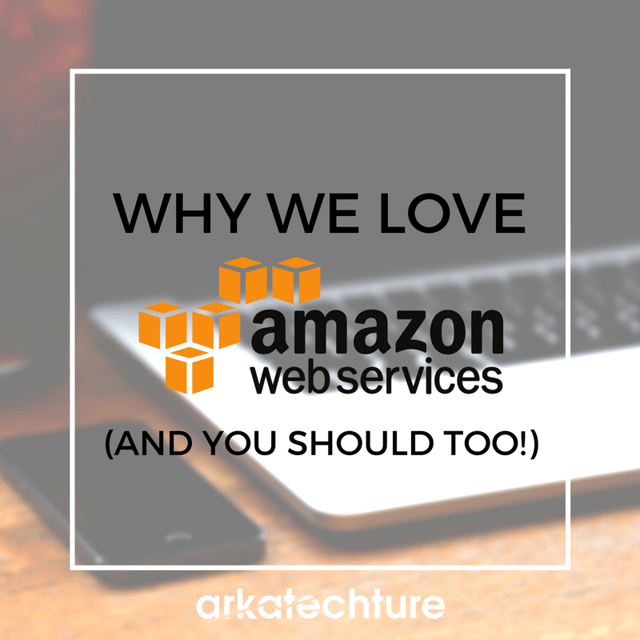Why We Love AWS (And You Should Too!)
by Chris Bond, on November 22, 2016
Amazon Web Services empowers us to create scalable, powerful, and highly available solutions for our clients with massive amounts of development time cut out. When a new client wants a enterprise grade solution but isn’t ready for an enterprise pricing model we turn to AWS. In the first post of this series we’re going to talk about a few of our favorite and most used AWS services: Lambda, SNS, RDS, and Cloud Formation.
This is only the tip of the iceberg as there are over 50 services today which AWS has ranging from tools to help with game development, to database management, to mobile applications.

Lambda
![]()
In 2014 AWS introduced Lambda: an event driven computing service. Lambda functions are discrete pieces of code (written in java, python, or javascript) that can be called by triggers, APIs, schedules, and just about anything else in your arsenal. We’ll cover serverless architecture in a future blog post, but in my opinion Lambda really tied the whole concept together and rebooted the microservice development paradigm.
One last tidbit: In October AWS announced that you can call Lambda function directly from their custom MySQL build Aurora allowing for loosely coupled micro services sitting right on top of your database. How cool is that?!
Simple Notification Service (SNS)
![]()
At Arkatechture we use SNS for alerting and monitoring of databases . It’s important that your engineers and administrators get the latest info on a failed ETL job or an overloaded database. While what’s under the covers may not be the most revolutionary technology, it’s the simplicity and ease of use which AWS provides that makes SNS such a great tool.
Relational Database Services (RDS)
![]()
Tired of babysitting your database, or even worse, paying someone else to? So are we! That’s why we love RDS, a fully managed database service which runs MySQL, SQL Server, Oracle, MariaDB, PostgreSQL, and their very own Aurora. Gone are the days of managing filegroups, manual backups, patching, and allocating space at the last minute. RDS is still relatively new, but it’s already changing how we design and develop new data warehouses especially for smaller businesses.
Cloud Formation
Asset transfer is a huge part of every client engagement. We usually POC and develop applications and on our own AWS environment and Cloud Formation has proven to be very useful when standing up the finished product for a client. You may have heard of infrastructure as code (IaC) where tech stacks are scripted out and easily deployable. Setting up all of the above resources and more is a tricky process with a lot of moving parts. It's easy to make a minor error which can cause a lot of headaches. Cloud Formation transforms your manually built AWS environment into a scripted template. This enables us to quickly deploy new envrionments for dev, sit, uat, prod and any number of similar environments at the click of a button.
Amazon Web Services is changing the way we build applications and data warehouses for our clients. In the near future, we'll talk about other services- like Serverless Architecture and what it means for ETL, and a few of our internal projects which leverage AWS. Be sure to subscribe to our blog so you don't miss out!
Already sold on AWS? Check out our blog post on getting AWS Certified!



